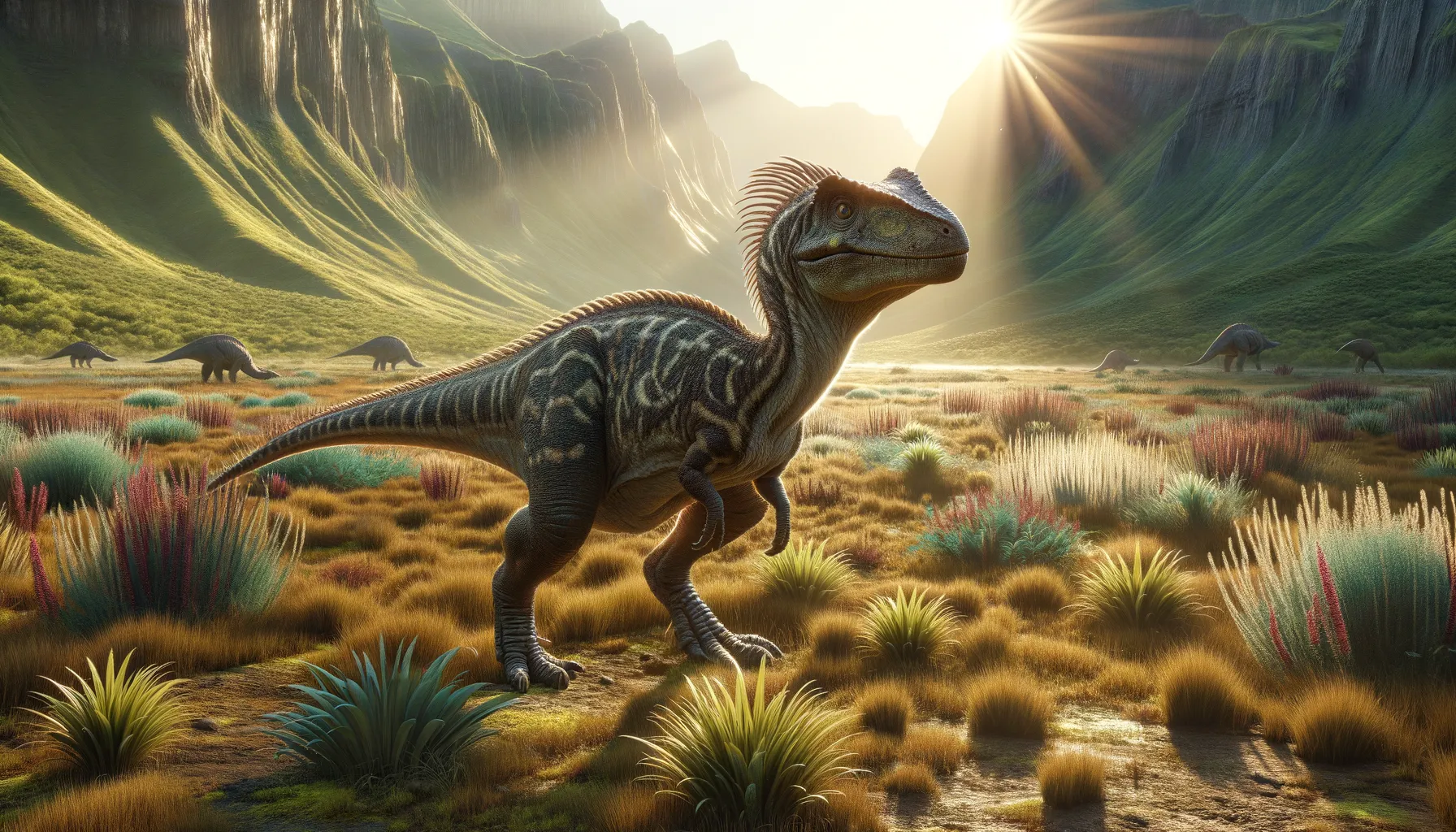
Chaoyangsaurus
A tiny creature of the ancient past.
Period
Jurassic
Length
Roughly 1 meter long.
Height
About 0.5 meters tall.
Weight
Approximately 15 kilograms.
Chaoyangsaurus was a small, herbivorous dinosaur that roamed the Earth during the late Jurassic period. With its beaked mouth, it grazed on low-lying vegetation, adapting to its role as a ground forager. Its fossils have predominantly been found in Northeast China, offering insights into the diverse dinosaur fauna of its time. This dinosaur represents an important piece in understanding the early evolution of ceratopsians, a group known for their distinctive facial horns and frills.
Diet
Chaoyangsaurus primarily consumed low-lying vegetation such as ferns and cycads. Its beaked mouth was ideal for cutting and gathering plant material, ensuring an efficient feeding mechanism.
Hunting
Being a herbivore, Chaoyangsaurus did not hunt other animals. Instead, it foraged for plants and was always alert to predators while it grazed.
Environmental challenges
Chaoyangsaurus faced predators typical of the Jurassic period, which threatened its grazing lifestyle. Adapting to a partially forested environment, it required consistent access to plant food sources. Climate shifts and environmental changes posed additional challenges, impacting its habitats and available resources over time.
Speed
Relatively slow, suited for grazing.
Lifespan
Estimated around 10 to 15 years.
First discovery
Discovered in China, 1999.
Fun Facts
- Chaoyangsaurus was a small dinosaur that lived during the Late Jurassic period.
- It was discovered in the Chaoyang area of Liaoning Province, China, which is how it got its name.
- Chaoyangsaurus is known for its beaked mouth, similar to modern-day birds, which it likely used to clip vegetation.
- This dinosaur belonged to a group called ceratopsians, which are known for their horned faces, though Chaoyangsaurus had no horns.
- Chaoyangsaurus was a herbivore, primarily feeding on low-lying plants.
- It is one of the earliest known ceratopsians, providing valuable insights into the evolution of this dinosaur group.
- Despite being small, Chaoyangsaurus played an important role in the ecosystem as a plant-eater.
Growth and Development
Chaoyangsaurus experienced growth from egg to adult, similar to modern reptiles. Young dinosaurs stayed close to adults for protection as they slowly grew to maturity. A consistent diet of vegetation supported its steady development, allowing it to reach full size and capable of caring for itself in its Jurassic ecosystem.
Habitat
The habitats of Chaoyangsaurus were likely lush areas with ample vegetation, essential for its diet. These environments offered shelter from predators and harsh weather, ensuring a stable area to thrive. The presence of water bodies within its range would have been crucial for drinking and environmental stability.
Interaction with other species
Chaoyangsaurus coexisted with various other dinosaur species, some of which were predators. Its primary interactions involved potential threats from these larger carnivores. Herbivore groups likely roamed together, forming loose associations for improved foraging efficiency and mutual protection.
Natural lifespan
Chaoyangsaurus naturally lived up to 15 years.
Reproduction
Chaoyangsaurus laid eggs, and nesting sites would have been selected strategically for protection. The young depended on their parents and surrounding adults for safety. This reproductive strategy was essential to maintaining population numbers against predatory and environmental pressures.
Social behaviour
Chaoyangsaurus was likely a social creature, benefiting from group living for protection against predators. Herd behavior provided advantages in foraging and care of the young. Social structures likely improved survival rates and facilitated learning among its members.
Fossil locations
Fossils of Chaoyangsaurus were primarily discovered in the Chaoyang area of Liaoning Province, China. These findings have contributed significantly to the understanding of early ceratopsians. Paleontological efforts in this region continue to reveal important details about the diversity and evolution of dinosaurs during the Jurassic period.
